HSBC 2010 Annual Report Download - page 10
Download and view the complete annual report
Please find page 10 of the 2010 HSBC annual report below. You can navigate through the pages in the report by either clicking on the pages listed below, or by using the keyword search tool below to find specific information within the annual report.-
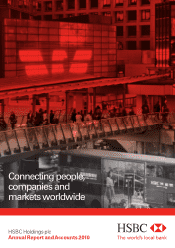 1
1 -
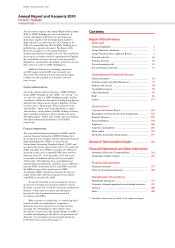 2
2 -
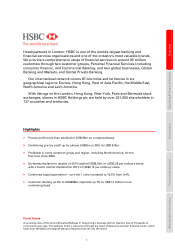 3
3 -
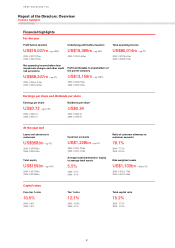 4
4 -
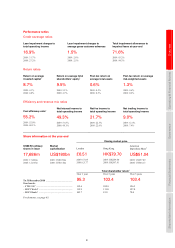 5
5 -
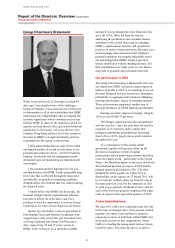 6
6 -
 7
7 -
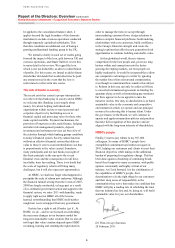 8
8 -
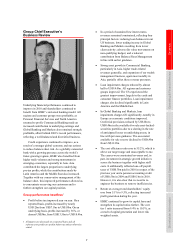 9
9 -
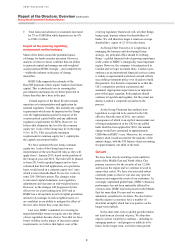 10
10 -
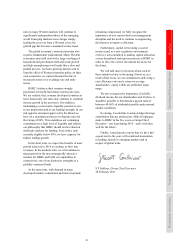 11
11 -
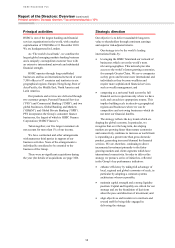 12
12 -
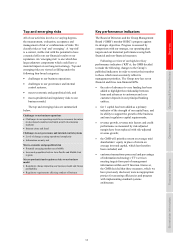 13
13 -
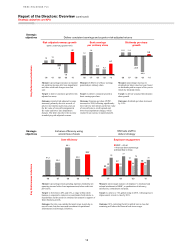 14
14 -
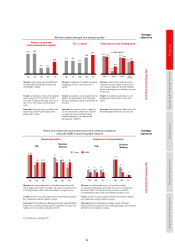 15
15 -
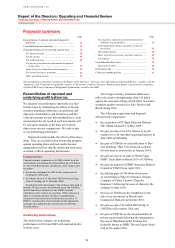 16
16 -
 17
17 -
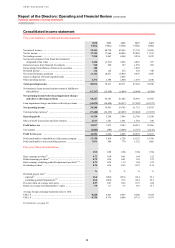 18
18 -
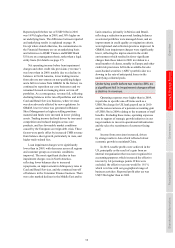 19
19 -
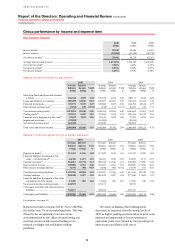 20
20 -
 21
21 -
 22
22 -
 23
23 -
 24
24 -
 25
25 -
 26
26 -
 27
27 -
 28
28 -
 29
29 -
 30
30 -
 31
31 -
 32
32 -
 33
33 -
 34
34 -
 35
35 -
 36
36 -
 37
37 -
 38
38 -
 39
39 -
 40
40 -
 41
41 -
 42
42 -
 43
43 -
 44
44 -
 45
45 -
 46
46 -
 47
47 -
 48
48 -
 49
49 -
 50
50 -
 51
51 -
 52
52 -
 53
53 -
 54
54 -
 55
55 -
 56
56 -
 57
57 -
 58
58 -
 59
59 -
 60
60 -
 61
61 -
 62
62 -
 63
63 -
 64
64 -
 65
65 -
 66
66 -
 67
67 -
 68
68 -
 69
69 -
 70
70 -
 71
71 -
 72
72 -
 73
73 -
 74
74 -
 75
75 -
 76
76 -
 77
77 -
 78
78 -
 79
79 -
 80
80 -
 81
81 -
 82
82 -
 83
83 -
 84
84 -
 85
85 -
 86
86 -
 87
87 -
 88
88 -
 89
89 -
 90
90 -
 91
91 -
 92
92 -
 93
93 -
 94
94 -
 95
95 -
 96
96 -
 97
97 -
 98
98 -
 99
99 -
 100
100 -
 101
101 -
 102
102 -
 103
103 -
 104
104 -
 105
105 -
 106
106 -
 107
107 -
 108
108 -
 109
109 -
 110
110 -
 111
111 -
 112
112 -
 113
113 -
 114
114 -
 115
115 -
 116
116 -
 117
117 -
 118
118 -
 119
119 -
 120
120 -
 121
121 -
 122
122 -
 123
123 -
 124
124 -
 125
125 -
 126
126 -
 127
127 -
 128
128 -
 129
129 -
 130
130 -
 131
131 -
 132
132 -
 133
133 -
 134
134 -
 135
135 -
 136
136 -
 137
137 -
 138
138 -
 139
139 -
 140
140 -
 141
141 -
 142
142 -
 143
143 -
 144
144 -
 145
145 -
 146
146 -
 147
147 -
 148
148 -
 149
149 -
 150
150 -
 151
151 -
 152
152 -
 153
153 -
 154
154 -
 155
155 -
 156
156 -
 157
157 -
 158
158 -
 159
159 -
 160
160 -
 161
161 -
 162
162 -
 163
163 -
 164
164 -
 165
165 -
 166
166 -
 167
167 -
 168
168 -
 169
169 -
 170
170 -
 171
171 -
 172
172 -
 173
173 -
 174
174 -
 175
175 -
 176
176 -
 177
177 -
 178
178 -
 179
179 -
 180
180 -
 181
181 -
 182
182 -
 183
183 -
 184
184 -
 185
185 -
 186
186 -
 187
187 -
 188
188 -
 189
189 -
 190
190 -
 191
191 -
 192
192 -
 193
193 -
 194
194 -
 195
195 -
 196
196 -
 197
197 -
 198
198 -
 199
199 -
 200
200 -
 201
201 -
 202
202 -
 203
203 -
 204
204 -
 205
205 -
 206
206 -
 207
207 -
 208
208 -
 209
209 -
 210
210 -
 211
211 -
 212
212 -
 213
213 -
 214
214 -
 215
215 -
 216
216 -
 217
217 -
 218
218 -
 219
219 -
 220
220 -
 221
221 -
 222
222 -
 223
223 -
 224
224 -
 225
225 -
 226
226 -
 227
227 -
 228
228 -
 229
229 -
 230
230 -
 231
231 -
 232
232 -
 233
233 -
 234
234 -
 235
235 -
 236
236 -
 237
237 -
 238
238 -
 239
239 -
 240
240 -
 241
241 -
 242
242 -
 243
243 -
 244
244 -
 245
245 -
 246
246 -
 247
247 -
 248
248 -
 249
249 -
 250
250 -
 251
251 -
 252
252 -
 253
253 -
 254
254 -
 255
255 -
 256
256 -
 257
257 -
 258
258 -
 259
259 -
 260
260 -
 261
261 -
 262
262 -
 263
263 -
 264
264 -
 265
265 -
 266
266 -
 267
267 -
 268
268 -
 269
269 -
 270
270 -
 271
271 -
 272
272 -
 273
273 -
 274
274 -
 275
275 -
 276
276 -
 277
277 -
 278
278 -
 279
279 -
 280
280 -
 281
281 -
 282
282 -
 283
283 -
 284
284 -
 285
285 -
 286
286 -
 287
287 -
 288
288 -
 289
289 -
 290
290 -
 291
291 -
 292
292 -
 293
293 -
 294
294 -
 295
295 -
 296
296 -
 297
297 -
 298
298 -
 299
299 -
 300
300 -
 301
301 -
 302
302 -
 303
303 -
 304
304 -
 305
305 -
 306
306 -
 307
307 -
 308
308 -
 309
309 -
 310
310 -
 311
311 -
 312
312 -
 313
313 -
 314
314 -
 315
315 -
 316
316 -
 317
317 -
 318
318 -
 319
319 -
 320
320 -
 321
321 -
 322
322 -
 323
323 -
 324
324 -
 325
325 -
 326
326 -
 327
327 -
 328
328 -
 329
329 -
 330
330 -
 331
331 -
 332
332 -
 333
333 -
 334
334 -
 335
335 -
 336
336 -
 337
337 -
 338
338 -
 339
339 -
 340
340 -
 341
341 -
 342
342 -
 343
343 -
 344
344 -
 345
345 -
 346
346 -
 347
347 -
 348
348 -
 349
349 -
 350
350 -
 351
351 -
 352
352 -
 353
353 -
 354
354 -
 355
355 -
 356
356 -
 357
357 -
 358
358 -
 359
359 -
 360
360 -
 361
361 -
 362
362 -
 363
363 -
 364
364 -
 365
365 -
 366
366 -
 367
367 -
 368
368 -
 369
369 -
 370
370 -
 371
371 -
 372
372 -
 373
373 -
 374
374 -
 375
375 -
 376
376 -
 377
377 -
 378
378 -
 379
379 -
 380
380 -
 381
381 -
 382
382 -
 383
383 -
 384
384 -
 385
385 -
 386
386 -
 387
387 -
 388
388 -
 389
389 -
 390
390 -
 391
391 -
 392
392 -
 393
393 -
 394
394 -
 395
395 -
 396
396
 |
 |

HSBC HOLDINGS PLC
Report of the Directors: Overview (continued)
Group Chief Executive’s Business Review
8
• Total loans and advances to customers increased
by 7% to US$958bn while deposits rose by 6%
to US$1.2 trillion.
Impact of the evolving regulatory
environment on the business
Much of the detail around the potential impact
of change for banks remains uncertain. However,
analysis of what we know confirms that our ability
to generate capital and manage our risk-weighted
assets positions HSBC strongly – and competitively
– within the industry as the pace of change
intensifies.
HSBC fully supports the rationale of the
Basel III proposals which require banks to hold more
capital. This is absolutely core to ensuring that
governments and taxpayers are better protected in
future than they have been in the past.
Certain aspects of the Basel III rules remain
uncertain as to interpretation and application by
national regulators. Notably, this includes any capital
requirements which may be imposed on the Group
over the implementation period in respect of the
countercyclical capital buffer and any additional
regulatory requirements for SIFIs. However, we
believe that ultimately the level for the common
equity tier 1 ratio of the Group may lie in the range
9.5 to 10.5%. This exceeds the minimum
requirement for common equity tier 1 capital plus
the capital conservation buffer.
We have estimated the pro forma common
equity tier 1 ratio of the Group based on our
interpretation of the new Basel III rules as they will
apply from 1 January 2019, based on the position of
the Group at year-end 2010. The rules will be phased
in from 2013 with a gradual impact and we have
estimated that their full application, on a proforma
basis, would result in a common equity tier 1 ratio
which is lower than the Basel II core tier 1 ratio by
some 250–300 basis points. The changes relate
to increased capital deductions, new regulatory
adjustments and increases in risk-weighted assets.
However, as the changes will progressively take
effect over six years leading up to 2019 and as
HSBC has a strong track record of capital generation
and actively manages its risk-weighted assets, we
are confident in our ability to mitigate the effect of
the new rules before they come into force.
Last year, HSBC committed to reviewing its
target shareholder return on equity once the effects
of new regulation became clearer. Now that we have
better visibility on the impact of increased capital
requirements, we believe that higher costs of the
evolving regulatory framework will, all other things
being equal, depress returns for shareholders of
banks. We will therefore target a return on average
shareholders’ equity of 12-15% in the future.
As Group Chief Executive, it is right that, in
managing the business and developing Group
strategy, my principal office should be in Hong
Kong – a global financial hub of growing importance
at the centre of HSBC’s strategically most important
region. However, the company is headquartered in
London and we hope to remain there. London’s pre-
eminence as an international financial services centre
is widely recognised and well-deserved and reflects
successful government policy over decades to build
that position. It is therefore important to us that the
UK’s competitive position is protected and
sustained. Appropriate supervision is an important
part of the larger equation. Policymakers should
continue to legislate and regulate, but they must not
destroy London’s competitive position in the
process.
As the Group Chairman has outlined, new
legislation is expected to be enacted in the UK,
effective from the start of 2011, one curious
consequence of which is an explicit incremental cost
of being headquartered in the UK for any global
bank. Had this been applied for 2010, this annual
charge would have amounted to approximately
US$0.6bn in HSBC’s case. Moreover, the overseas
balance sheet would account for the majority of the
annual charge, with the UK balance sheet accounting
for approximately one third of the total.
Outlook
We have been closely watching events unfold in
parts of the Middle East and North Africa. Our
primary concern is for the security of our 12,000
staff across the region and we continue to work to
ensure their safety. We have also activated robust
continuity plans so that we can also stay open for
business and support the needs of our customers. As
a strongly capitalised global bank, HSBC’s financial
performance has not been materially affected by
events to date. HSBC has been present in the Middle
East for more than 50 years and we remain
absolutely committed to its future. We also believe
that the region’s economies have a number of
structural strengths which leave us positive on the
longer-term outlook.
In the short term, risks to global growth remain,
not least from an elevated oil price. We therefore
expect cyclical volatility to continue – including in
emerging markets – and progress is unlikely to be
linear. In the longer term, we believe that growth
